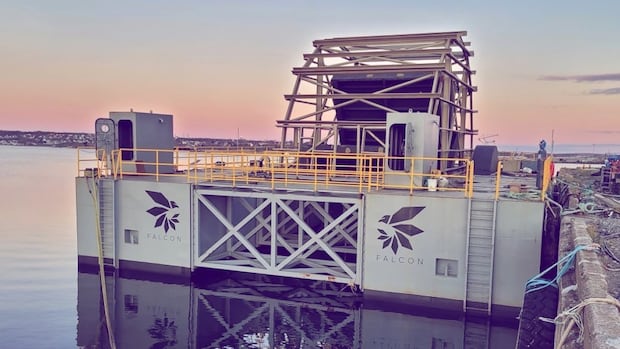Nova Scotia seafood sector far exceeds targets set a decade ago

Federal Agriculture Minister Lawrence MacAulay was roasted by opponents last week when he posted a photo on X (formerly Twitter) of himself eating a lobster in Malaysia while on a trade mission in the Indo-Pacific.
The P.E.I. politician was denounced as tone deaf and out of touch with average Canadians, but overseas trade missions are one reason Nova Scotia seafood exports have exceeded goals set for the industry 10 years ago in the Ivany report — a blueprint for expanding the province’s economy.
Veteran seafood analyst Peter Norsworthy — while not weighing in on the optics of the MacAulay image — said seafood exports from Nova Scotia to China have grown from $25 million in 2007 to $666 million in 2021, with almost all of that growth in lobster.
Touched down in Malaysia! I’m looking forward to a productive week of meeting with officials, industry leaders, and partners from Canada and the Indo-Pacific to promote our world-class products – like the lobster I enjoyed for lunch in Kuala Lumpur! 🦞 <a href=”https://t.co/Wj5qSWiX8d”>pic.twitter.com/Wj5qSWiX8d</a>
—@L_MacAulay
It was a new market able to absorb huge increases in landings occurring at the time.
“The challenge that we had in the early 2010s was the increasing volume of lobster being available and a lack of market. The Maritime provinces collectively put a push on promoting those products in Asia,” Norsworthy said.
Former premier Stephen McNeil and then-fisheries minister Keith Colwell were frequent flyers to Asia.
“Those promotion efforts by the provinces and the governments at the time certainly helped take that excess lobster and increase demand for lobster overall and boosted prices. Market promotion works,” he said.
Good luck and good management
Many other factors outside the control of government or industry contributed to growth in Nova Scotia’s seafood exports, especially a favourable exchange rate.
The industry works in Canadian dollars and is paid in U.S. dollars. Both were near par in 2012. Since then, the Canadian dollar weakened to the benefit of the exporters.
Increased consumer demand in North America during COVID-19 also helped, as has a growing Chinese middle class with an appetite for the crustacean that’s bright red when cooked and sometimes called a dragon prawn.
A decade after the Ivany report was issued as a call to action, fishery and agriculture exports stand out in an assessment of where Nova Scotia has met, or failed to meet, 19 targets it identified. The value of Nova Scotia food exports increased 168 per cent in the decade ending 2022, easily surpassing the goal to double in value.
Rising seafood exports were driven by the big four: lobster, crab, shrimp and scallops. Lobster leads the way with an export value of $1.3 billion in 2022.
‘Plenty of opportunity’
The growing sector has also attracted ambitious new entrants like Ontario native Paul Richer of Fathom Fish and Seafoods, which started in 2010 and now sells 10 million pounds of multiple species annually and processes Atlantic salmon grown in the land-based Sustainable Blue facility in Hants County.
“I had no history in the business whatsoever. I don’t come from a fishing family. I don’t have any quota. This was something that was completely built from scratch in learning the industry and then finding ways to create efficiencies that would push the industry forward and create space for a new business to succeed,” he said.
Richer said he found the scale of the industry is not readily understood by the public and used snow crab as an example.
Almost all of the snow crab caught in Canada is exported, mainly to China, the U.S. and other Asian countries. Nova Scotia is not the biggest player in the region, but tens of millions of pounds are still landed in the province.
“To think about [3,000] or 4,000 truckloads with 30,000 pounds each and what that looks like. And how quickly a retailer can just make 250,000 pounds of snow crab disappear [into export markets],” he said.
The economic reach extends beyond the wharf or even the lawyers, accountants and bankers involved in the business, he added.
“We’ve worked with some companies helping with … software for traceability. Some engineering firms that help try to solve difficult problems that exist, whether it be in manufacturing or in transportation or in packaging. The sector does have some tentacles that reach pretty far.”
The business is famously cyclical
Higher interest rates and a slip in demand post-COVID-19 have taken some of the shine off the business.
Norsworthy notes performance goals for the lobster sector called for in the Ivany report are still unmet, including improvements in product quality and co-operation between fishermen and processors on shore.
Richer has learned it can take months to make money and days to lose.
Still, both say the outlook is positive.
MORE TOP STORIES




